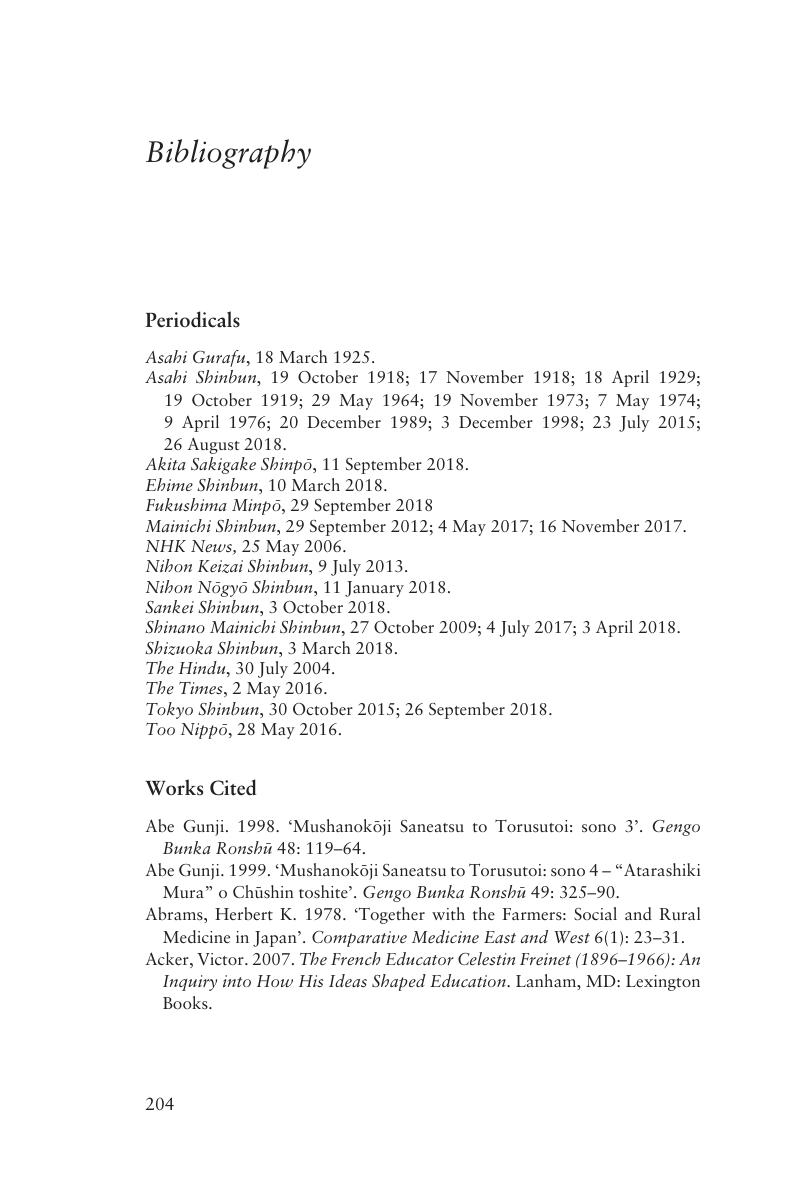Book contents
- Japan’s Living Politics
- Japan’s Living Politics
- Copyright page
- Contents
- Maps
- Figures
- Acknowledgements
- Maps
- 1 Japan and the Crisis of Democracy
- 2 Living Politics
- 3 The White Birch and the Earth
- 4 Rethinking the Village
- 5 Peasant Art, Free Drawing and the Free University
- 6 The Body Politic
- 7 Seeds of Democracy
- 8 Development from Within
- 9 Disaster and Aftermath
- 10 Conclusions and Beginnings
- Bibliography
- Index
- References
Bibliography
Published online by Cambridge University Press: 16 April 2020
- Japan’s Living Politics
- Japan’s Living Politics
- Copyright page
- Contents
- Maps
- Figures
- Acknowledgements
- Maps
- 1 Japan and the Crisis of Democracy
- 2 Living Politics
- 3 The White Birch and the Earth
- 4 Rethinking the Village
- 5 Peasant Art, Free Drawing and the Free University
- 6 The Body Politic
- 7 Seeds of Democracy
- 8 Development from Within
- 9 Disaster and Aftermath
- 10 Conclusions and Beginnings
- Bibliography
- Index
- References
Summary

- Type
- Chapter
- Information
- Japan's Living PoliticsGrassroots Action and the Crises of Democracy, pp. 204 - 227Publisher: Cambridge University PressPrint publication year: 2020

